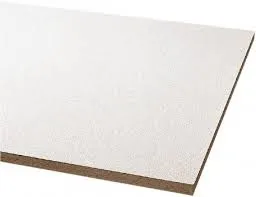Dec . 15, 2024 00:04 Back to list
Soffit Access Panels for Easy Maintenance and Repair in Your Home
Understanding Soffit Access Panels Importance and Installation
Soffit access panels are essential features in modern residential and commercial architecture, serving as a convenient solution for accessing hard-to-reach areas within a building. They are typically installed in ceilings or walls that conceal services such as plumbing, electrical wiring, or HVAC systems. This article delves into the significance of soffit access panels, their types, installation methods, and maintenance tips to ensure optimal functionality.
What is a Soffit Access Panel?
A soffit access panel is a framed opening that allows for easy access to concealed services and components behind walls or ceilings. Unlike traditional access doors that may disrupt the aesthetic appeal of a space, soffit panels are designed to blend seamlessly into the surrounding architecture. They can be made from various materials, including drywall, metal, or plastic, providing options that suit different decor styles and functional needs.
Importance of Soffit Access Panels
1. Ease of Maintenance One of the primary functions of soffit access panels is to facilitate easy maintenance of building systems. Whether it’s checking for leaks in plumbing, servicing electrical connections, or performing routine HVAC maintenance, these panels provide safe and simple access to what lies hidden behind walls and ceilings.
2. Aesthetic Appeal Soffit access panels come in various finishes and styles, allowing them to complement the overall design of a space. Unlike bulky access doors, they can be made flush with the surrounding surface, maintaining the aesthetic integrity of the area.
3. Space Optimization In modern architecture, space is often at a premium. Soffit access panels utilize the overhead space by allowing you to maintain access without needing to carve out an entire wall or ceiling section. This efficiency is particularly valuable in smaller rooms or tight spaces.
4. Enhanced Safety By providing a designated access point, soffit panels reduce the need for more invasive repairs. This increases safety for maintenance personnel, who can avoid overextending themselves while accessing difficult areas.
Types of Soffit Access Panels
1. Drywall Access Panels These panels are typically made of lightweight materials and can be finished with a variety of surfaces, making them ideal for residential settings. They can be painted or textured to match the surrounding wall.
2. Metal Access Panels Often used in commercial buildings, metal access panels are durable and can withstand the wear and tear of high traffic areas. They are usually available in stainless steel or galvanized steel, offering both strength and a professional finish.
soffit access panel

3. Plastic Access Panels Lightweight and corrosion-resistant, plastic panels are seen in environments where moisture might be a concern, such as bathrooms or kitchens. They offer a cost-effective solution for access.
Installation of Soffit Access Panels
Installing a soffit access panel requires careful planning to ensure that it meets both functional and aesthetic requirements. Here’s a step-by-step guide
1. Identify the Location Determine where the panel is needed based on the services behind the wall or ceiling. Accessibility should be the main consideration.
2. Measure Accurately Take precise measurements of the area to ensure the panel fits snugly within the space. The opening should ideally be larger than the object it accesses.
3. Cut the Opening Using a drywall saw, carefully cut an opening in the wall or ceiling where the panel will be installed. Make sure to avoid any electrical or plumbing lines.
4. Install the Frame Secure the panel’s frame to the opening, ensuring it is level and flush with the surrounding surface.
5. Attach the Panel Finally, attach the panel to the frame, ensuring it opens and closes smoothly. This may involve screws or suitable fasteners, depending on the panel type.
Maintenance Tips
Regular check-ups of your soffit access panels are essential to ensure they remain functional. Inspecting the seams for any gaps or signs of wear can help prevent water damage or pest entry. Keeping the area clean and ensuring easy access is paramount when maintenance is needed.
In conclusion, soffit access panels play a crucial role in maintaining the functionality of a modern building while preserving its aesthetic charm. By understanding their significance and following proper installation techniques, homeowners and builders can greatly enhance the convenience and efficiency of their living and working spaces.
-
Quality Ceiling Trap Doors & Access Panels | Easy & Secure AccessNewsAug.30,2025
-
Durable Ceiling T Grid Systems | Easy InstallationNewsAug.29,2025
-
PVC Gypsum Ceiling: Durable, Laminated Tiles for Modern SpacesNewsAug.28,2025
-
Pvc Gypsum Ceiling Is DurableNewsAug.21,2025
-
Mineral Fiber Board Is DurableNewsAug.21,2025
-
Ceiling Tile Clip Reusable DesignNewsAug.21,2025







